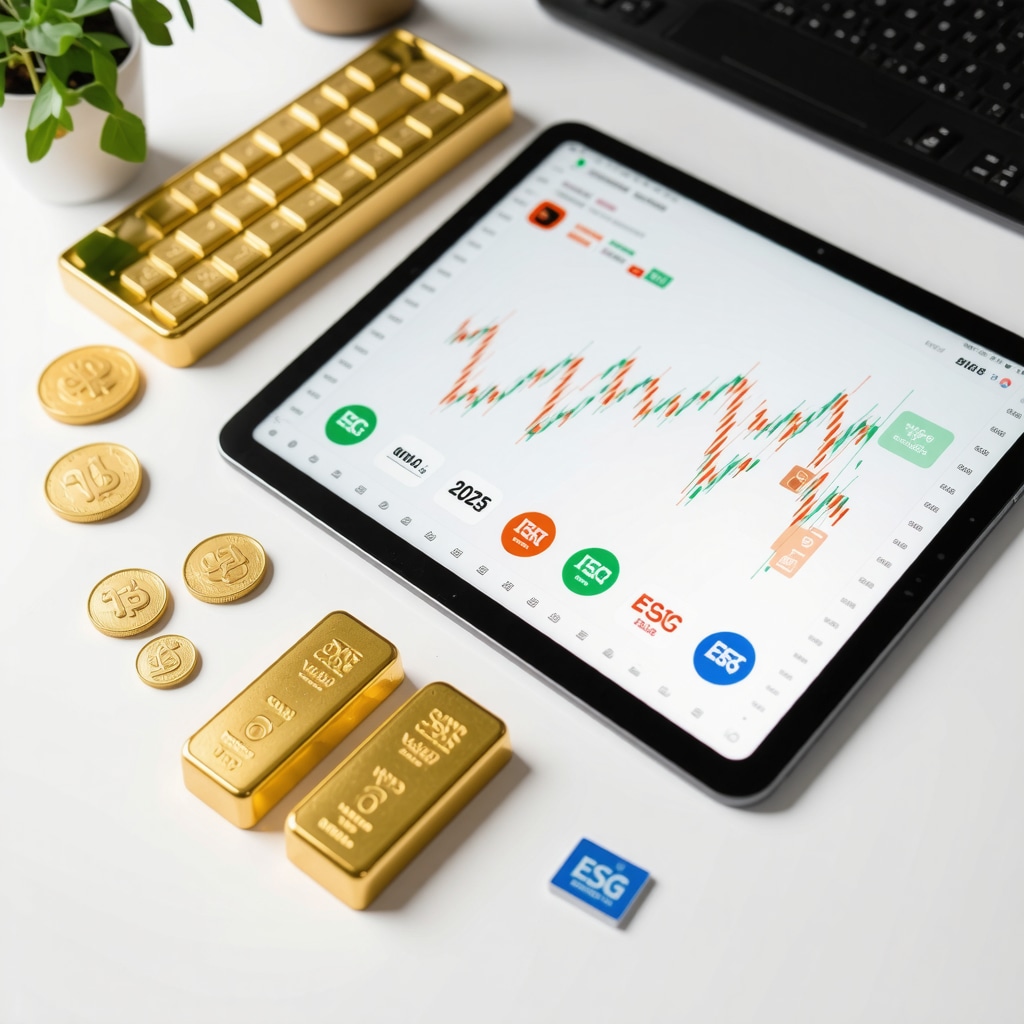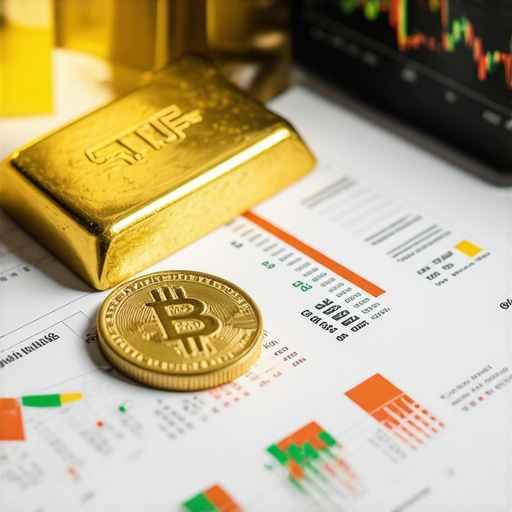When Shiny Metals Spark Heated Debates: Gold Bullion or Gold Coins?
Imagine you’re at a swanky cocktail party, and the topic of gold investment pops up. Suddenly, the room divides: some swear by the glossy appeal of gold coins, while others champion the hefty solidity of gold bullion bars. But beyond the sparkle and heft, which is truly the better choice for your portfolio? Let’s dive into this age-old debate with a columnist’s flair and a pinch of streetwise savvy.
The Glittering Tale of Gold Coins: More Than Just Eye Candy?
Gold coins carry a charisma unlike any other form of physical gold. They’re like the rockstars of the precious metals world, often minted with historical significance or limited editions that can charm collectors and investors alike. Beyond their metal content, coins often have numismatic value — meaning rarity and condition can propel their worth beyond the simple gold price. That said, this can cut both ways; not every coin appreciates, and some might be harder to sell quickly without a skilled dealer.
But Do Those Pretty Coins Really Pay Off When It’s Time to Cash In?
It’s a question that stumps many newcomers. Yes, coins often come with higher premiums over spot gold prices due to craftsmanship and collectibility. If you’re seeking liquidity and straightforward valuation, this can complicate matters. Conversely, if you savor the thrill of collecting and potential for numismatic gains, coins might be your golden ticket. For newbies eager to navigate the coin world safely, plenty of resources like safe ways to buy and store gold coins for beginners offer invaluable guidance.
Gold Bullion Bars: The No-Nonsense Heavyweights
Gold bullion bars, often overlooked for their lack of flair, are the workhorses of gold investment. They tend to have lower premiums than coins, making them a more cost-effective way to acquire pure gold. Their straightforward valuation—based solely on weight and purity—simplifies transactions and appeals to serious investors focused on bullion’s intrinsic value. Think of bullion bars as the reliable sedan in your investment garage: not flashy, but dependable and efficient.
Storage and security can be an issue with bullion, especially if you’m going big with bars. For practical investor advice on securing your shiny stash, check out expert tips on safe ways to buy and store gold bars. After all, the last thing you want is to lose your golden nest egg to a dusty attic or worse.
What’s the Real Deal Behind the Prices?
Price premiums on gold coins vs. bullion bars swing wildly depending on market demand, rarity, and craftsmanship. The World Gold Council highlights that coins often carry higher premiums due to their collectible nature, while bullion bars offer a purer value proposition with minimal markup (source).
Is Physical Gold Still the Ultimate Safe Haven in 2025?
With economic uncertainty swirling like a storm, many investors wonder whether physical gold remains a reliable haven or if digital alternatives are taking over. Physical gold—be it bullion or coins—offers tangibility and psychological comfort that digital gold can’t match. For those intrigued by the broader investment landscape, exploring physical gold vs digital gold is a must-read to understand the nuances.
So, dear reader, what’s your golden preference? Are you captivated by the charm of coins or seduced by the solid simplicity of bullion bars? Share your thoughts and experiences in the comments below—after all, every golden story deserves a voice.
Decoding Market Dynamics: How External Forces Shape Gold Preferences
Investment in gold is not insulated from the swirling tides of global events. Geopolitical tensions, monetary policies, and central bank gold buying dramatically influence investor sentiment and pricing structures. For instance, increased central bank purchases have historically bolstered bullion demand, as these institutions prioritize pure gold bars over collectible coins for reserve assets. This trend underscores the importance of understanding macroeconomic indicators when choosing between gold coins and bullion bars. How Central Bank Gold Purchases Shape Global Demand Trends offers in-depth insights for savvy investors aiming to anticipate market movements.
The Psychological Edge: Why Tangibility and Aesthetics Still Matter
Despite the rise of digital gold platforms, physical gold retains a unique psychological allure. Owning tangible gold—whether a beautifully minted coin or a hefty bullion bar—provides emotional reassurance that digital assets struggle to replicate. This tangibility plays a crucial role during market volatility, as investors seek comfort in assets they can physically hold and store securely.
Could the Emotional Appeal of Gold Coins Outweigh Pure Investment Logic?
This question probes deeper than mere market data. While bullion bars often win on cost efficiency and liquidity, coins offer a compelling blend of historical significance and collectible charm that can enhance investor engagement and long-term satisfaction. For collectors and investors alike, this dual role means that coins can serve not only as financial assets but also as treasured heirlooms.
Understanding this dual nature can help investors craft a portfolio that balances economic prudence with personal fulfillment—an approach often overlooked in traditional investment strategies.
Integrating Gold Into a Balanced Portfolio
Investors increasingly recognize gold’s strategic role in diversifying portfolios and hedging against inflation. Whether opting for coins or bullion bars, the key lies in aligning gold holdings with broader financial goals. Those focused on growth might explore how to start investing in gold stocks for long-term growth, while others may prefer the stability offered by physical bullion.
Additionally, many investors combine gold ETFs and mutual funds to achieve liquidity and diversification, as detailed in the Investopedia guide on gold ETFs. This layered approach exemplifies how gold investments can be tailored to fit varying risk appetites and market conditions.
For readers eager to deepen their understanding and optimize their gold investment strategy in 2025, exploring best gold investment strategies for economic uncertainty in 2025 is highly recommended.
What’s your take on the ongoing gold debate? Have you found a balance between coins and bullion that suits your financial journey? Share your insights and questions in the comments — let’s enrich the discussion with your unique perspective!
Strategic Gold Acquisition: Leveraging Market Timing and Premium Negotiation
Seasoned investors understand that timing can be as critical as the asset itself when purchasing gold coins or bullion bars. Market fluctuations, geopolitical events, and monetary policy shifts can create windows of opportunity to acquire physical gold at optimal premiums. For instance, during periods of market stress or when gold prices dip due to short-term sell-offs, savvy buyers can negotiate lower premiums on coins or bars from reputable dealers.
Beyond market timing, negotiation tactics play a pivotal role. Unlike the fixed pricing often found online, many dealers are open to price discussions, especially for bulk purchases or repeat customers. Understanding dealer inventory turnover and demand cycles can empower investors to secure better deals, thereby maximizing return potential over the long term.
How Can Sophisticated Investors Balance Liquidity and Premiums in Diverse Gold Holdings?
This question delves into the nuanced trade-offs between holding highly liquid, low-premium bullion bars and potentially higher-premium, less liquid numismatic coins. Advanced investors often employ a tiered approach: maintaining a core allocation in bullion bars for liquidity and price stability, while allocating a smaller portion to select coins that exhibit strong numismatic appreciation potential.
Moreover, portfolio diversification within physical gold can mitigate risks such as market volatility and dealer liquidity constraints. Specialist platforms and auction houses provide channels for buying and selling rare coins, but these require expertise and patience. Conversely, bullion bars facilitate quicker transactions, especially when standardized sizes and certifications are involved.
Storage Innovations: Beyond Traditional Vaults to Smart Security Solutions
Physical gold ownership inevitably raises questions about security and storage. While traditional bank safe deposit boxes remain popular, recent advances in technology have introduced smart vault solutions integrating biometric access, real-time surveillance, and insured storage services accessible remotely.
Additionally, some investors are exploring decentralized storage models where ownership is tokenized yet backed by physical gold stored in insured, geographically diversified vaults. These hybrid models blend tangibility with digital convenience, offering enhanced security and liquidity without sacrificing the physical asset’s intrinsic value.
Understanding the pros and cons of each storage modality—and their impact on liquidity and insurance costs—is vital for crafting a resilient gold investment strategy.
Regulatory Landscape and Tax Implications: Navigating Complex Jurisdictions for Optimal Returns
Investors must also grapple with varying international regulations and tax treatments impacting gold transactions. For example, in some jurisdictions, capital gains tax exemptions apply to certain gold coins considered legal tender, while bullion bars may be taxed differently. Awareness of these intricacies can influence the choice between coins and bars, particularly for high-net-worth individuals and cross-border investors.
Staying abreast of evolving regulatory frameworks—including import/export restrictions, anti-money laundering laws, and reporting requirements—is crucial. Collaborating with tax professionals specializing in precious metals can uncover opportunities for tax efficiency and compliance.
For deeper insight into global gold investment regulations, the IMF Working Paper on Gold Trade Regulatory Frameworks provides a comprehensive analysis.
Emerging Trends: The Intersection of Gold Investment and Sustainable Practices
As environmental, social, and governance (ESG) criteria gain prominence in investment decisions, the gold market is witnessing a surge in demand for ethically sourced and eco-friendly gold products. Investors increasingly seek certified conflict-free coins and bars produced with minimal environmental impact.
Certification schemes such as the Responsible Jewellery Council (RJC) and the London Bullion Market Association’s (LBMA) Responsible Gold Guidance are setting benchmarks for sustainability. Incorporating ESG-compliant gold holdings can enhance portfolio appeal to socially conscious investors and align with broader responsible investment mandates.
Exploring these certifications and their impact on premiums and liquidity is essential for investors aiming to future-proof their gold portfolios against shifting market values.
For readers keen on advancing their understanding of sustainable gold investment, our upcoming articles will unpack these developments in detail. Stay tuned and engage with our expert community to elevate your gold investment acumen.
Mastering the Art of Timing: When to Strike in the Gold Market
For the seasoned investor, understanding market cycles is paramount. Gold prices are notoriously sensitive to macroeconomic shifts, geopolitical tensions, and monetary policy nuances. Recognizing these inflection points can significantly improve your entry and exit strategy. For example, the volatility triggered by central bank announcements or unexpected geopolitical events often creates brief windows where premiums on both coins and bullion bars dip, offering savvy buyers a chance to accumulate at lower cost bases. To hone your timing skills, exploring top gold trading techniques for maximizing profits in 2025 provides expert insights tailored for navigating fluctuating markets.
How Can Investors Leverage Premium Negotiation to Optimize Gold Acquisitions?
While spot gold prices set the baseline, the premiums attached to physical gold vary widely by dealer, product type, and market demand. Expert investors recognize that premiums are not always fixed and can be negotiated—especially on bulk orders or repeat transactions. Understanding dealer inventory pressures and seasonal demand cycles empowers investors to ask for better pricing. For instance, bullion bars generally have lower premiums than collectible coins, but even within coin categories, premiums fluctuate depending on rarity and demand. This negotiation savvy can translate directly into improved portfolio performance over time.
ESG and Ethical Gold: Aligning Wealth with Values
Environmental and social responsibility are reshaping the gold investment landscape. Today’s investors increasingly demand transparency and ethical sourcing, making ESG-compliant gold products a growing niche. Certifications like those from the Responsible Jewellery Council (RJC) and the London Bullion Market Association’s (LBMA) Responsible Gold Guidance ensure that gold bars and coins meet rigorous sustainability standards. While these certifications may introduce slightly higher premiums, they offer peace of mind and can attract a new generation of socially conscious investors. The Responsible Jewellery Council provides extensive resources to verify compliant products and understand their market impact.
This ethical dimension adds another layer of complexity but also opportunity—investors can future-proof their portfolios by integrating ESG gold holdings alongside traditional bullion and coins.
Strategic Integration: Combining Physical Gold with Digital and Equity Assets
No longer is gold investment confined to the physical realm. Advanced portfolios increasingly blend physical bullion, collectible coins, digital gold platforms, and gold equities to achieve diversification and liquidity. For those seeking long-term growth, understanding how to balance these assets is crucial. Resources like how to start investing in gold stocks for long-term growth offer guidance on incorporating equities, while simultaneously maintaining a core physical gold position for stability.
Smart investors recognize that each gold investment type serves a distinct role—physical gold as a hedge and tangible asset; digital gold for convenience and liquidity; equities for growth potential. Crafting a portfolio that harmonizes these elements is the hallmark of next-level gold investment strategy.
Which Emerging Gold Investment Vehicles Are Worth Watching in 2025 and Beyond?
The gold market continues to innovate with new investment vehicles such as tokenized gold, ESG-focused funds, and advanced ETFs that combine bullion exposure with equity-like features. These developments offer novel ways to access gold’s benefits without the storage and security challenges of physical assets. However, each comes with unique regulatory and market risks that require thorough due diligence. For a comprehensive exploration of these options, readers can delve into physical gold vs digital gold to determine which aligns best with their risk tolerance and investment goals.
We invite you to share your experiences and strategies in the comments below—whether you favor the tactile luxury of coins, the efficiency of bullion bars, or the innovation of digital gold. Your insights enrich the collective wisdom of our investing community.

Expert Insights & Advanced Considerations
Strategic Diversification Within Physical Gold Holdings Enhances Portfolio Resilience
The nuanced balance between gold coins and bullion bars is not merely a choice of form but a strategic allocation decision. Incorporating a core holding of low-premium bullion bars ensures liquidity and straightforward valuation, while selectively acquiring rare or certified coins can add numismatic value and portfolio differentiation. This layered approach mitigates market liquidity constraints and capitalizes on both intrinsic metal value and collectible premiums.
Market Timing and Premium Negotiation Are Critical Levers for Maximizing Returns
Expert investors actively monitor geopolitical events and central bank activity to identify optimal entry points when premiums temporarily compress. Additionally, cultivating relationships with reputable dealers enables premium negotiation, especially for bulk purchases, which can substantially improve cost basis and overall investment performance. Understanding dealer inventory dynamics and seasonal demand cycles is paramount.
Ethical and ESG-Compliant Gold Products Are Reframing Investor Priorities
As sustainability becomes integral to investment mandates, the demand for responsibly sourced gold—certified by bodies like the Responsible Jewellery Council and LBMA—is reshaping market preferences. Although these products may carry slight premium adjustments, they provide peace of mind and appeal to a growing demographic prioritizing ethical stewardship alongside financial returns.
Integration of Physical Gold with Digital and Equity Instruments Enables Comprehensive Portfolio Strategies
Physical gold acts as a tangible hedge, but modern portfolios benefit from blending this with digital gold platforms and gold equities. This hybridization enhances liquidity, growth potential, and risk diversification. Investors should leverage expert resources on gold stocks and ETFs to align these components effectively, tailoring allocations to individual risk tolerance and long-term objectives.
Curated Expert Resources
- BuyingGoldNow: How to Start Investing in Gold Stocks for Long-Term Growth – Offers in-depth guidance on incorporating gold equities into portfolios for sustained appreciation and diversification.
- BuyingGoldNow: Safe Ways to Buy and Store Gold Coins for Beginners – An essential primer for newcomers aiming to navigate the complexities of numismatic gold acquisition and secure storage.
- BuyingGoldNow: Top Gold Trading Techniques for Maximizing Profits in 2025 – Provides tactical insights into timing, premium negotiation, and market indicators crucial for active gold traders.
- Responsible Jewellery Council (RJC) – An authoritative source for verifying ethical sourcing certifications and understanding sustainability standards in gold production.
- International Monetary Fund (IMF) Working Paper on Gold Trade Regulatory Frameworks – A comprehensive analysis of global regulatory environments affecting gold investment and trade compliance.
Final Expert Perspective
In the evolving landscape of physical gold investment, discerning investors recognize that the debate between gold coins and bullion bars transcends aesthetics and immediate cost. It encompasses strategic portfolio construction, timing acumen, ethical considerations, and integration with broader financial vehicles. Mastering these dimensions empowers investors to harness gold’s full potential as a hedge, growth asset, and legacy vehicle. For those ready to deepen their expertise, exploring how to start investing in gold stocks for long-term growth and adopting proven trading techniques can elevate your strategy. Engage with our community and share your professional insights to further enrich this dynamic conversation.










